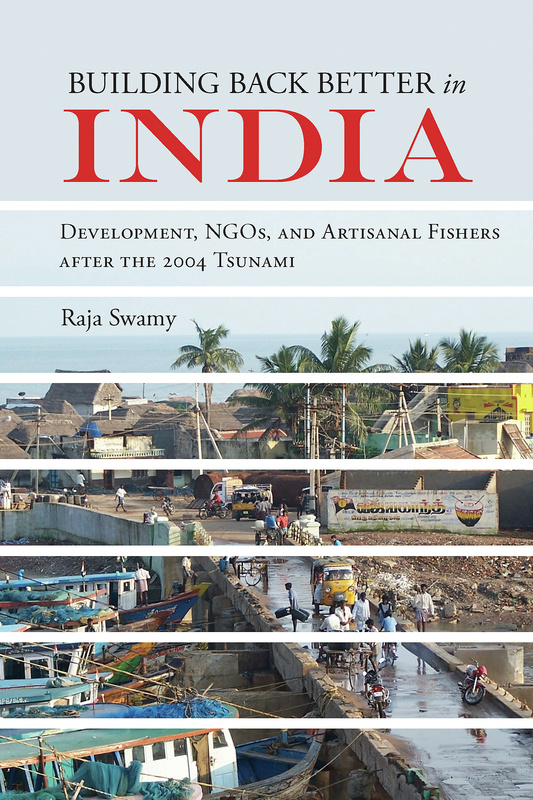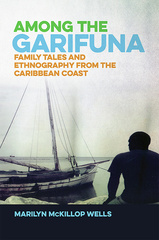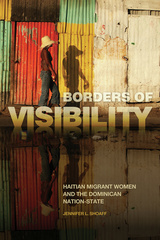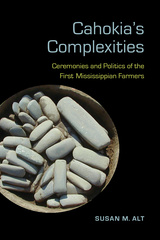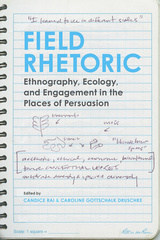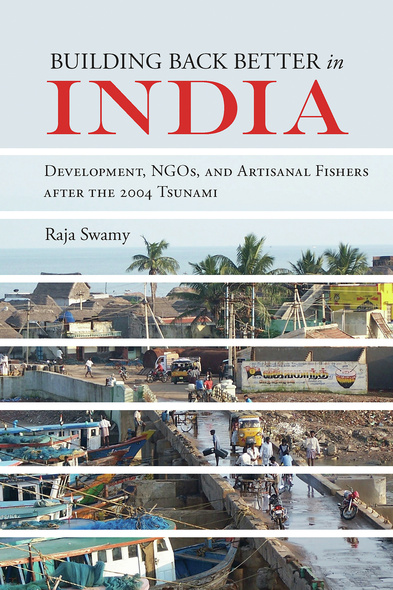
240 pages, 6 x 9
9 B&W figures - 1 map
Hardcover
Release Date:29 Jun 2021
ISBN:9780817320973
Building Back Better in India
Development, NGOs, and Artisanal Fishers after the 2004 Tsunami
By Raja Swamy
University of Alabama Press
Critically examines the role of humanitarian aid and disaster reconstruction
Building Back Better in India: Development, NGOs, and Artisanal Fishers after the 2004 Tsunami addresses the ways in which natural disasters impact the strategies and priorities of neoliberalizing states in the contemporary era. In the light of growing scholarly and public concern over “disaster capitalism” and the tendency of states and powerful international financial institutions to view disasters as “opportunities” to “build back better,” Raja Swamy offers an ethnographically rich account of post-disaster reconstruction, its contested aims, and the mixed outcomes of state policy, humanitarian aid, and local resistance. Using the 2004 Indian Ocean tsunami as a case study, Swamy investigates the planning and implementation of a reconstruction process that sought to radically transform the geography of a coastal district in the Indian state of Tamil Nadu.
Drawing on an ethnographic study conducted in Tamil Nadu’s Nagapattinam District, Swamy shows how and why the state-led, multilaterally financed, and NGO-mediated reconstruction prioritized the displacement of coastal fisher populations. Exploring the substantive differences shaping NGO action, specifically in response to core political questions affecting the well-being of their ostensible beneficiaries, this account also centers the political agency of disaster survivors and their allies among NGOs in contesting the meanings of recovery while navigating the process of reconstruction.
If humanitarian aid brought together NGOs and fishers as givers and recipients of aid, it also revealed in its workings competing and sometimes contradictory assumptions, goals, interests, and strategies driving the fraught historical relationship between artisanal fishers and the state. Importantly, this research foregrounds the ambiguous role of NGOs involved in the distribution of aid, as well as the agency and strategic actions of the primary recipients of aid—the fishers of Nagapattinam—as they struggled with a reconstruction process that made receipt of the humanitarian gift of housing conditional on the formal abandonment of all claims to the coast. Building Back Better in India thus bridges scholarly concerns with disasters, humanitarianism, and economic development with those focused on power, agency, and resistance.
Building Back Better in India: Development, NGOs, and Artisanal Fishers after the 2004 Tsunami addresses the ways in which natural disasters impact the strategies and priorities of neoliberalizing states in the contemporary era. In the light of growing scholarly and public concern over “disaster capitalism” and the tendency of states and powerful international financial institutions to view disasters as “opportunities” to “build back better,” Raja Swamy offers an ethnographically rich account of post-disaster reconstruction, its contested aims, and the mixed outcomes of state policy, humanitarian aid, and local resistance. Using the 2004 Indian Ocean tsunami as a case study, Swamy investigates the planning and implementation of a reconstruction process that sought to radically transform the geography of a coastal district in the Indian state of Tamil Nadu.
Drawing on an ethnographic study conducted in Tamil Nadu’s Nagapattinam District, Swamy shows how and why the state-led, multilaterally financed, and NGO-mediated reconstruction prioritized the displacement of coastal fisher populations. Exploring the substantive differences shaping NGO action, specifically in response to core political questions affecting the well-being of their ostensible beneficiaries, this account also centers the political agency of disaster survivors and their allies among NGOs in contesting the meanings of recovery while navigating the process of reconstruction.
If humanitarian aid brought together NGOs and fishers as givers and recipients of aid, it also revealed in its workings competing and sometimes contradictory assumptions, goals, interests, and strategies driving the fraught historical relationship between artisanal fishers and the state. Importantly, this research foregrounds the ambiguous role of NGOs involved in the distribution of aid, as well as the agency and strategic actions of the primary recipients of aid—the fishers of Nagapattinam—as they struggled with a reconstruction process that made receipt of the humanitarian gift of housing conditional on the formal abandonment of all claims to the coast. Building Back Better in India thus bridges scholarly concerns with disasters, humanitarianism, and economic development with those focused on power, agency, and resistance.
A part of the NGOgraphies series, this ethnographic study by Swamy centers on the fishing population of the Nagapattinam District in the South Indian state Tamil Nadu. The author pays special attention to the rebuilding of the Indian coastline after the 2004 Indian Ocean tsunami, particularly the displacement of coastal fishers through efforts to ‘build back better.’ Swamy argues the build back better plan, championed by the government, international financial institutions, and NGOs, instituted policies that removed fishers from their traditional homes. They were given new housing in return for relinquishing claims to their lands along the coast, but this policy ignored the fishers' economic needs and focused solely on the humanitarian aspect of disaster. The artisanal fishers resisted this removal through various methods. They viewed the NGO gifts as ‘assets’ while reclaiming the fishing lands as their own through political and social defiance. The book makes an excellent point that humanitarian aid often disregards the long-term needs of displaced populations. As natural disasters increase, recovery and rebuilding efforts need to holistically encompass the needs of the individuals being displaced. Recommended.’
—CHOICE
‘After the 2004 tsunami in South India, reconstruction efforts leveraged the humanitarian gift of inland housing to relocate the artisanal fishing population and privatize the coastal commons. But the task of securing a spatial fix for capital accumulation failed. With keen ethnographic insight, Swamy shows how fishers sustained their claim to coastal life and livelihood while transforming humanitarian gifts into assets. Challenging assumptions about its depoliticizing and disciplining effects, he argues for humanitarianism as a contested process that can reset the contours of economy and politics.’
—Ajantha Subramanian, author of The Caste of Merit: Engineering Education in India
This rich, multi-level ethnography brings together a rich ethnography of a fishing community in India, with the largely separate literatures of humanitarianism, disaster studies and development studies, and offers new ways to help poor communities to remain political agents in the face of the forces of neo-liberalism.’
—Arjun Appadurai, author of India's World: The Politics of Creativity in a Globalized Society
‘Raja Swamy’s Building Back Better in India is a timely contribution to critical disaster studies—a field, which has grown over the past 15 years, as the social sciences have , to grasp the social and economic dynamics that constitute manmade and environmental disasters.’
—Exertions (Society for the Anthropology of Work)
One of the books of the year in 2013 was Sonali Deraniyagala’s Wave, a haunting memoir of utter loss after the 2004 Tsunami. Raja Swamy’s Building Back Better in India is its complement. Through grassroots analysis and rigorous analysis, Swamy shows the long term horror of disaster capitalism. This probing inquiry into regimes of non-governmental regimes of governance, and the neoliberalism embedded in modern philanthropy, should be required reading for anyone involved in disaster relief.'
—Raj Patel, coauthor of A History of the World in Seven Cheap Things: A Guide to Capitalism, Nature, and the Future of the Planet
‘The day after Christmas, 2004 a tsunami annihilated thousands in the fishing communities of a coastal area of southern India. Mostly self-sufficient, they were not heavy contributors to the GDP so the government and NGOs had a blank slate to incorporate the area into the global neoliberal economy with a port and a tourist destination based on a long forgotten 17th century Danish colonial outpost. Brick houses inland would replace the flimsy structures people had built with local materials. But people would have to renounce any claims to land along the seashore so ‘ . . . the desire to remake shattered lives on the coast came into conflict with a reconstruction plan that demanded their eviction.’ Three years later, anthropologist Raja Swamy has assessed the result in Building Back Better in India. It is a complex story of relations among NGOs, layers of government, local people, and distant masters and markets. This book can help us understand how the responses to the 2020 COVID-19 set the interests of the powerful and wealthy over all others while telling us that our own well-being is central. The book is a timely story of disaster capitalism in action.’
—Paul Durrenberger, coauthor of Paradigms for Anthropology: An Ethnographic Reader
Raja Swamy is assistant professor in the Department of Anthropology at the University of Tennessee, Knoxville. Learn more at www.bbbindia.org.
List of Figures
Preface
Acknowledgments
Abbreviations
Introduction: “Building Back Better”
Part I. Nagapattinam
Chapter 1. The Tsunami of 2004 and Its Aftermath
Chapter 2. Artisanal Fishers, the State, and an NGO
Part II. The Politics of Humanitarianism
Chapter 3. NGO Antipolitics and Politics
Chapter 4. The Humanitarian Gift Economy
Part III. Economic Development and Humanitarian Aid
Chapter 5. Unbridging the Future: Connectivity and Distance
Chapter 6. Memory, Space, and Power
Conclusion
Glossary
Notes
Bibliography
Index

